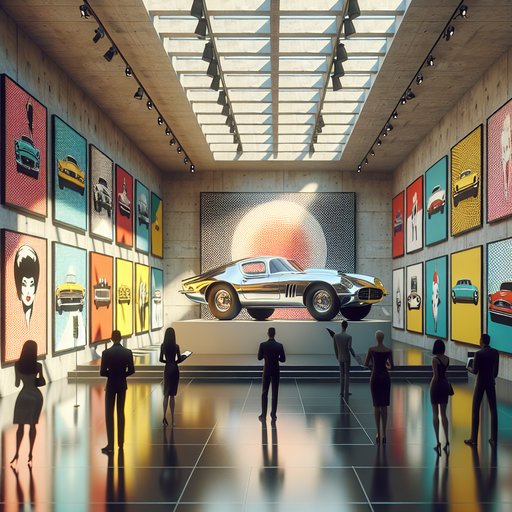
From Los Angeles to Paris, institutions have been revisiting Pop Art’s fascination with the automobile, pairing canvases with carburetors and putting iconic “art cars” back in public view. Over the past two years, museum programs have foregrounded Andy Warhol, Roy Lichtenstein, and pop-adjacent figures whose work captured mass-market mobility and desire. The result has been exhibitions that bridge design and fine art, court both car clubs and art audiences, and reframe the car as a symbol, surface, and stage.
At the Petersen Automotive Museum in Los Angeles, Andy Warhol: Cars – Works from the Mercedes‑Benz Art Collection ran from July 2022 through January 2023, marking the most substantial U.S. outing of the series in decades. The exhibition assembled more than two dozen drawings and silkscreens alongside period Mercedes‑Benz vehicles, underscoring Warhol’s serial approach to brand and model. Organized with the Stuttgart-based collection, the show drew design students and families as much as art-world regulars, with interpretation focusing on the car as a pop-age commodity, image, and industrial object.
BMW’s storied Art Car program also reentered the spotlight last year, when the Centre Pompidou in Paris hosted a rare group display in May 2024. Historic entries by Roy Lichtenstein (1977) and Andy Warhol (1979) appeared alongside newer commissions, linking Pop’s fascination with motion to contemporary debates about mobility and spectacle. Timed to public events around the 24 Hours of Le Mans, the presentation emphasized the museum’s role in mediating between racetrack, street culture, and the gallery. Pop’s car culture has been reframed in survey form too, notably through Ed Ruscha’s retrospective.
MoMA’s ED RUSCHA / NOW THEN (September 2023–January 2024), followed by SFMOMA in summer–early fall 2024, foregrounded Standard Stations, parking lots, and Sunset Boulevard as the infrastructure of postwar image-making. While Ruscha resists neat labels, curators positioned these works within Pop’s cool appraisal of signage, fuel, and the road, expanding the canon beyond chrome to include the systems that make driving possible. Ongoing collection displays keep the narrative in circulation. The Mercedes‑Benz Art Collection continues to lend selections from Warhol’s Cars series to European partners, while the BMW Museum in Munich rotates Pop-era Art Cars by Lichtenstein and Warhol through its galleries and event appearances.
Roy Lichtenstein’s painting In the Car (1963), held by the Scottish National Gallery of Modern Art, remains a touchstone and is periodically on view in Edinburgh. This year, institutions are pairing such works with talks, film programs, and family days, drawing crossover audiences and inviting fresh readings of the automobile as both icon and idea.












